THE SPIDER MONKEY AND THE GARLIC TREE
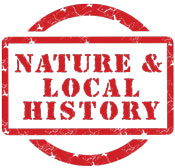 One of Nature’s Many Puzzles
One of Nature’s Many Puzzles
By Jack Ewing
Fluffy yellow flowers carpeted the trail. How beautiful. Then the odor overwhelmed my nostrils. Garlic! “Oh my god,” I exclaimed turning to my friend Juan Ramón. “Are these flowers from the ajo tree?”
Juan laughed. “There it is right over there,” pointing to a tall, thick, straight tree about 20 meters off the trail. “Haven’t you ever seen the flowers before? I know you love the tree.”
As you can see in the photo the tree is not only enormous, but also tall, thick, and straight. The wood is strong and very resistant to water. Ranchers sought them out, felled them and used the wood to make boards for corrals. It was also one of the preferred woods used for railroad ties when Costa Rica’s railroads were being built. Other uses include structural supports for bridges and buildings. In the last century so many of them were cut that very few are left.
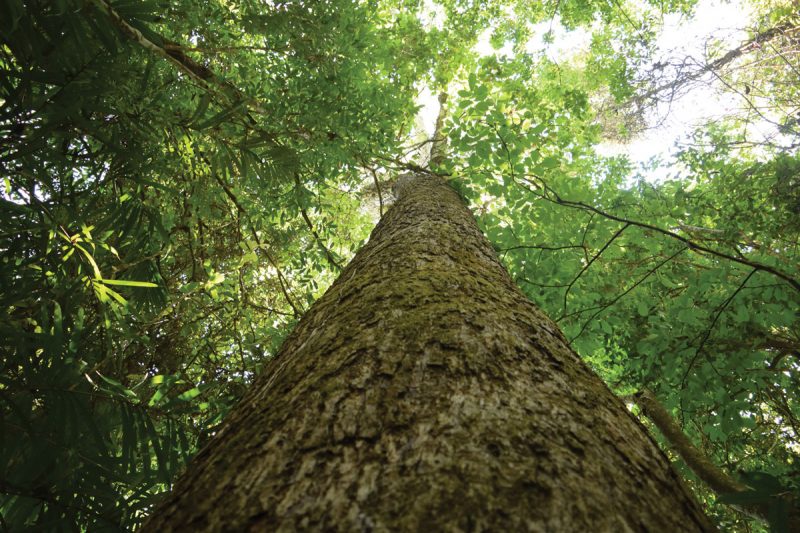
When you hear of a species in danger of extinction an image of a charismatic mammal like a panda or a tiger usually comes to mind, not a tree. Yet one of the biggest most impressive trees I have ever known has been listed as vulnerable on the IUCN red list since 1998, Caryocar costarricense. As the name implies the tree is found mostly in Costa Rica, though there are a few of them in Panama and possibly in Colombia. As the species is not found in any country where English is spoken I have never heard of a name for it in that language. The Spanish common name is Ajo (pronounced “Ah-ho”) or Ajillo meaning garlic.
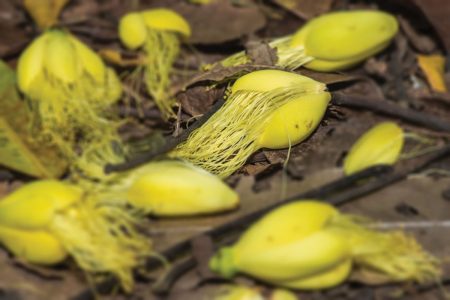
At Hacienda Barú we still have eight individuals that we know of, and there may be a few more in remote parts of the reserve that we haven’t found yet. I have known of the plight of the ajo tree for many years and had hoped that our trees could serve as a supply of seeds to help replenish the species. I soon found out that all of our ajo trees were mature, and there were no seedlings or medium sized trees to be found. The mature trees produced fruits with seeds, but those seeds apparently didn’t germinate.
One self-proclaimed expert in plant nurseries told us that the seeds will germinate, but only if they have been cut from the top of the tree and have never fallen to the ground. This sounded a bit farfetched, as the seeds surly germinate in nature, under certain conditions, and that germination is likely to take place on the ground, not in the top of the tree. But he was the expert, so one our tree climbing guides managed to ascend more than 40 meters into the top of an enormous ajo tree, and cut a bunch of seeds. The expert took them to his nursery to work his magic on them, but only 2 seeds out of several hundred germinated, and the seedlings died before they reached 20 centimeters in height. So much for the tree top germination theory.
In the mid 1990s, when I was still guiding people through the rainforest, I showed an ajo tree to a group of visitors and explained that extinction was a possibility for the tree. The lack of germination almost guaranteed that the species would eventually become extinct on Hacienda Barú. One of the ladies in the group spoke up. “A few days ago we were in Carara National Park and saw an ajo tree,” she explained. “Our guide told us about the reproduction problem, and mentioned that the seeds won’t germinate in a forest unless spider monkeys are present. Are there any spider monkeys here?” I told her that the white-faced capuchin was our only monkey species, and questioned her further about the incident in Carrara, but the guide had only made the one brief comment.
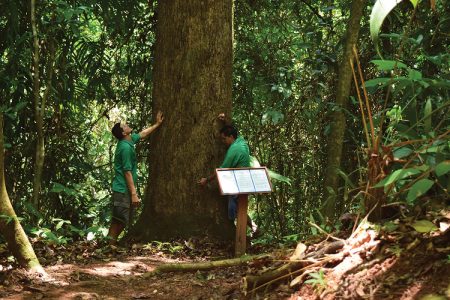
This was very interesting. Puzzle pieces were starting to shift around, coming closer to fitting together. Many years ago spider, howler, and capuchins all abounded at Hacienda Barú but around 1947 an epidemic of yellow fever swept through this area, and wiped out all of the first two species, leaving only the white-faced capuchins. There hadn’t been any spider monkeys on Hacienda Barú for 50 years, and all of our ajo trees were more than 50 years old. Then in in 1997 a lone male spider monkey appeared, then a female, then a couple more. New secondary forest was beginning to appear along the coastal ridge, and the Path of the Tapir Biological Corridor was starting to take shape and connect isolated forest patches together. The spider monkeys were the first indication that the corridor was working. Later the howlers came too.
When I decided to write this article I mentioned to Hacienda Barù guide Deiber Segura that I needed a photo of one of our more impressive ajo trees. I knew that he was going to be near it that day. I told him a little bit about the article and the tree. “Did you know that there is young ajo tree along the ridge on the left side of the toucan trail?” he asked.
“How do you know it’s an ajo?” I asked, trying to keep the excitement out of my voice.
“Because the leaves have a saw tooth edge,” he replied, “and the stems are red.”
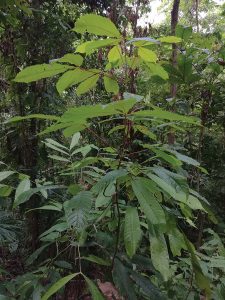
I went to see the tree the next day with Juan Ramòn, who was the only guide old enough to know what a seedling should look like. It took us a while to find it but once he spotted it Juan knew immediately. “It’s been so many years since I have seen one of these,” he said. “And it’s the first on Hacienda Barú.”
The tree was about three meters tall, and still quite thin. It looked healthy and, like Deiber said, had a saw tooth edge on the leaves and red stems. Later Deiber told me he had seen another young tree almost a kilometer from the first. This was all quite interesting, and the puzzle pieces moved a little closer together. The first spider monkey arrived 21 years ago, and now we are starting to see young trees. The evidence wouldn’t hold up to scientific scrutiny, but it was a strong indication that spider monkeys might have something to do with ajo reproductivity. What we need is to find out if the ajos reproduce in a forest that has both mature ajo trees and spider monkeys, a forest like the one on the Osa Peninsula.
Searching the internet for more information I came across a study done by Silvia Solis, Jorge Lobo, and Maryori Grimaldo on the Osa and published in the Academic Journal Biología Tropical. Not only did the study confirm that the ajo trees on the Osa reproduce regularly, but the researchers observed female spider monkeys with young eating the pulp off of the fruit and dropping the seeds on the ground. Scarlet macaws were also seen eating the fruits and, presumably the seeds as well. This was especially interesting since the big red birds have been locally extinct since the early 1960s and just started visiting Hacienda Barú again in 2014.
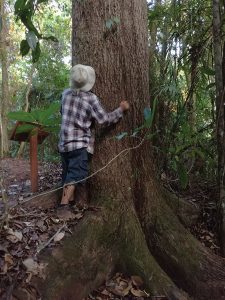
One particularly interesting bit of information that came out of the Osa study is that medium sized trees produce the most fruit. That would be those with a diameter of between 80 and 190 centimeters. The researchers found that trees outside of that range produced little to no fruit. The diameter of the big tree in the photo with the two men is 106 centimeters, well within the optimum size range for fruit production. This is good news, because that tree, and others on Hacienda Barú, all of which are a similar size, will be in that optimum range for many years to come. During that time we expect populations of spider monkeys and scarlet macaws to continue to increase and, if in fact they do play a part in the germination of ajo seeds, their presence will likely promote seedling production. Maybe the future of the ajo tree on Hacienda Barú isn’t as bleak as I had once imagined.
This would make a wonderful project for a graduate student who would like to spend a few years studying Caryocar costarricense. We are far from having proof, but we do have enough evidence to support the hypothesis that the presence of spider monkeys and/or scarlet macaws is essential to the reproduction of the tree, but there is much work to be done before any level of certainty can be obtained. The big reward at the end would be if we could learn enough to save a species from extinction.
It is one of so many of Mother Nature’s fascinating puzzles.
